When preparing to sell your home, a pre listing inspections can be an invaluable tool. This inspection, conducted before your property goes on the market, identifies any potential issues that could affect the sale, giving you time to address them and ensure a smoother transaction. For sellers, understanding common issues found during these inspections can help prevent last-minute negotiations or unexpected repair requests from buyers. In this post, we’ll cover the most frequently encountered problems in pre-listing inspections and provide guidance on how to resolve them effectively.
Roof Damage and Leaks
Common Issues:
Roof damage is one of the top issues uncovered in pre-listing inspections. This can range from missing shingles to more significant issues like leaks, sagging areas, or damaged flashing. Even minor roof damage can be a red flag for buyers, as it may lead to water intrusion, mold growth, or structural issues.
How to Address It:
Consider having a roofing professional assess and repair any damage before listing your home. Replacing missing shingles, sealing leaks, and ensuring the roof is in good shape can help maintain the home’s value and prevent price negotiations due to roof concerns. If your roof is older but intact, consider providing a recent roof certification to assure buyers of its condition.
Plumbing Problems
Common Issues:
Plumbing issues frequently arise in pre-listing inspections. Common findings include leaky faucets, low water pressure, running toilets, outdated piping, and sometimes even leaks hidden in walls. Left unaddressed, these problems can suggest to buyers that there are more significant issues lurking beneath the surface.
How to Address It:
Start by addressing any obvious issues, such as dripping faucets or running toilets, and hire a plumber to inspect for hidden leaks. For outdated pipes, consider replacing sections that are showing signs of wear or deterioration. This not only reassures buyers but also helps prevent more costly damage in the future, such as water damage and mold growth.
Electrical System Issues
Common Issues:
Electrical issues are common, especially in older homes, and can range from exposed wires and outdated wiring systems to overloaded circuits and non-functioning outlets. These problems are not only a safety hazard but can also be costly to address if left unattended.
How to Address It:
For minor issues like broken outlets or exposed wires, hiring an electrician to repair them can be a straightforward fix. If the home has outdated wiring (such as knob-and-tube or aluminum wiring), consider replacing it or budgeting for upgrades. Addressing these issues shows buyers that the home is safe and up-to-date, making it more appealing.
Foundation Cracks and Settling
Common Issues:
Foundation issues can range from minor cracks due to settling to more significant structural concerns. Minor cracks are often a natural part of the settling process, but larger cracks, sloping floors, or sticking doors and windows may indicate more serious foundation issues.
How to Address It:
Consult a foundation expert to assess the severity of any cracks or settling issues. Minor cracks can often be filled or repaired to prevent them from expanding, while more significant problems may require professional repair. Addressing foundation concerns can alleviate buyer fears and support a strong selling price.
Heating, Ventilation, and Air Conditioning (HVAC) Issues
Common Issues:
HVAC systems are scrutinized closely in inspections, as buyers are concerned about energy efficiency and comfort. Common issues include outdated systems, inadequate maintenance, clogged filters, and malfunctioning components.
How to Address It:
Have your HVAC system serviced and inspected by a professional before listing your home. Replace filters, clean vents, and repair any components that are not working correctly. If the HVAC system is nearing the end of its lifespan, consider offering a home warranty as part of the sale to reassure buyers.
Water Damage and Mold
Common Issues:
Water damage and mold are often found in areas like basements, bathrooms, kitchens, or around windows and doors. These issues can signal poor maintenance or leaks and often raise red flags for buyers due to potential health risks and the expense of repairs.
How to Address It:
If water damage or mold is identified in the pre-listing inspection, address the source of the issue (like a leaky pipe or roof). Remediate any mold professionally, and replace damaged materials where necessary. Be transparent with buyers about the remediation efforts, which can help restore their confidence in the property’s safety and quality.
Poor Drainage and Grading Issues
Common Issues:
Poor drainage can lead to foundation damage, water intrusion, and even mold problems. This often occurs when a property’s grading is incorrect, causing water to pool near the foundation. Blocked or damaged gutters can also lead to drainage issues.
How to Address It:
Ensure that gutters are cleaned, downspouts are functioning properly, and any grading issues are corrected to direct water away from the foundation. If needed, consider hiring a landscaping professional to regrade areas around the property. Addressing these issues helps protect the foundation and reassures buyers of the property’s long-term durability.
Windows and Doors: Faulty Seals and Frames
Common Issues:
Faulty seals, cracked frames, or improperly installed windows and doors can allow drafts, impact energy efficiency, and lead to water intrusion. Buyers see these as signs of poor maintenance and potential energy costs.
How to Address It:
Repair or replace damaged windows and doors, paying close attention to seals and frames. Even adding caulking or replacing weatherstripping can make a noticeable difference. A home with properly sealed windows and doors is more attractive to buyers, as it offers improved energy efficiency and fewer maintenance concerns.
Pest Infestations
Common Issues:
Signs of pest infestations, such as termites, rodents, or ants, are common in pre-listing inspections. Pest damage can compromise structural integrity and present a health risk, making it a serious issue for potential buyers.
How to Address It:
Have a pest control professional assess the property and perform treatment as necessary. If termites or other damaging pests are found, address the affected areas and repair any damage. Providing buyers with a recent pest inspection report can reassure them that the home is pest-free and well-maintained.
Conclusion
A pre-listing inspection allows sellers to identify and address potential issues, enhancing the property’s value and marketability. By tackling common problems such as roof damage, plumbing issues, electrical faults, and HVAC concerns before listing, you can attract more buyers, avoid last-minute negotiations, and increase the likelihood of a smooth and profitable sale. Proactively managing inspection findings demonstrates responsibility and transparency, giving buyers confidence in their investment and helping your property stand out in a competitive market.

